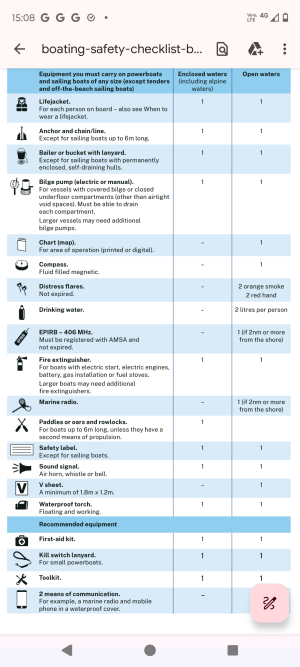KeithMD
Well-known member
On another website, I've just seen a suggestion that people should fly flags upside down to indicate a vessel in distress. This was posted as an alternative to using the VHF radio and (hopefully) just making a Pan Pan call. Before escalating to a mayday call if necessary. One reply questioned whether anyone else, from any distance, would ever notice what way up a flag was flying. The original poster didn't like that reply and doubled-down with this response.
if I were in difficulties on a yacht and my radio had failed (and I'd been daft enough to sail without a locator beacon) I'd certainly fly the red duster upside down and hopefully anyone with any nautical knowledge (such as a Coastguard) would know what it meant.
I've underlined the part that got me wondering. The original poster clear has a strong opinion, and I didn't want to start a flame war. It's been a few years since I last equipped a yacht with safety equipment to charter standards, so perhaps I'm the one that's out-of-touch. Outside of commercial vessels and racing yachts, how many people actually have them on board? I only mean having the equipment, actual use is a seperate topic.
My same out-of-touchness applies to training courses. Way back (20 years+) when I did my training, the MOB routine consisted of rehearsing the MOB with a fender thrown overboard and then the recovery. VHF was mentioned, locator beacons not mentioned at all. But that was 20+ years ago. What level of RYA course and qualification does one now have to reach before it becomes (a) even mentioned (b) an optional extra or (c) mandatory?
if I were in difficulties on a yacht and my radio had failed (and I'd been daft enough to sail without a locator beacon) I'd certainly fly the red duster upside down and hopefully anyone with any nautical knowledge (such as a Coastguard) would know what it meant.
I've underlined the part that got me wondering. The original poster clear has a strong opinion, and I didn't want to start a flame war. It's been a few years since I last equipped a yacht with safety equipment to charter standards, so perhaps I'm the one that's out-of-touch. Outside of commercial vessels and racing yachts, how many people actually have them on board? I only mean having the equipment, actual use is a seperate topic.
My same out-of-touchness applies to training courses. Way back (20 years+) when I did my training, the MOB routine consisted of rehearsing the MOB with a fender thrown overboard and then the recovery. VHF was mentioned, locator beacons not mentioned at all. But that was 20+ years ago. What level of RYA course and qualification does one now have to reach before it becomes (a) even mentioned (b) an optional extra or (c) mandatory?

